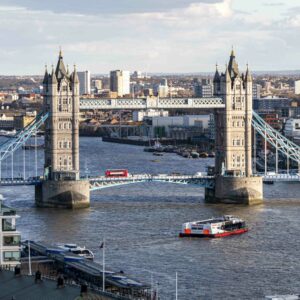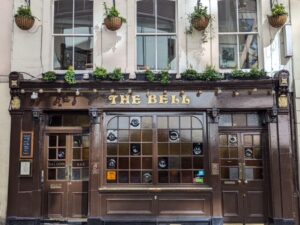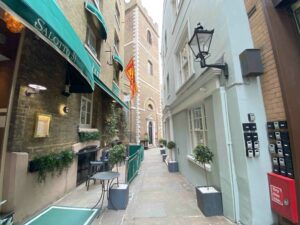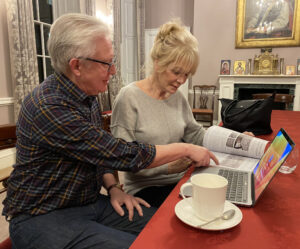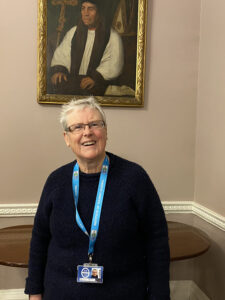Unforgotten Lives is a free exhibition at the London Metropolitan Archives telling the stories of Londoners of African, Caribbean, Asian and Indigenous heritage, discovered in the archive. From the working class to the affluent, from immigrants to long-standing residents, the exhibition captures the rich tapestry of London’s social fabric, and highlights the contributions made by individuals from all walks of life, their struggles, their family life, the discrimination they faced and the successes they achieved.
The exhibition covers the period 1560-1860 and has many familiar faces connected to the abolition movement, and we see them in their everyday ordinary existence. We see Olaudah Equiano’s actual signature as Gustavus Vassa, when he releases a widow from a debt owed to him, and his daughter Joanna’s marriage entry in a register of marriages. There is also a fire insurance policy registered in name of Ann Sancho, widow of Ignatius Sancho, and William, their son. They are described as booksellers – at that time a term used interchangeably with publisher – as William Sancho was the first black book publisher in Britain. The register of his mother on the policy suggests that she too was involved in the business. As well as being an abolitionist, Ignatius Sancho was a published musician, and this interest seems to have continued, as musical instruments worth £40 are listed on the insurance policy. This paints the picture of a cultured, middle-class family of businesspeople.
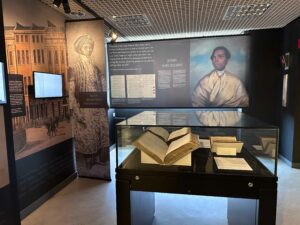
In addition, we discover stories of ordinary Londoners, such as Billy Waters, formerly enslaved, who fought for the British in the American War of Independence. When he came to Britain, having only one leg, but a skilful violin player, he made a living playing the violin outside the Adelphi Theatre on the Strand. He became part of the cultural landscape, yet died in the workhouse when only 45 years old, a fate that was all too common.
The Sierra Leone Resettlement Scheme was the government solution to deal with poverty amongst the ‘Black’ community, and features in the life of Ann Watson who was placed in the Foundling Hospital in 1778 by her mother Martha. Ann was probably of South Asian heritage, having been born in Calcutta, and shows how the terms used to describe ‘race’ in the archives have to be treated with caution. Fast forward eight years and Ann is reunited with her mother – a most unusual occurrence for babies left at the Foundling Hospital – as Martha’s circumstances have improved, having married William Green from Barbados, and the family want to travel to Sierra Leone. Records suggest they did in fact do so, and sailed in 1787.
As well as Londoners of African and Caribbean heritage, we hear stories about the wealthy Sayyid Muhammed I’tisam-ud-Din from Bengal who wrote of his travels in Europe in 1766. He writes that when he went to a performance, “I, who went to see a spectacle, became myself a sight to others” later musing that Londoners were used to seeing Lascars (sailors from the Indian subcontinent) but not the exoticism of “a great man of Bengal”.
Similarly, Yemmerrawanyea, a First Nation Australian of the Eora Nation, came to England in 1793 as part of the household of Arthur Philips, the first governor of Australia who is memorialised next to the Reflection Garden on New Change and at Westminster Abbey. While in England, Yemmerrawanyea and his fellow countryman performed a song of the Eora Nation, which was notated and published by Edward Jones, and is the oldest published music from Australia. A performance of this song can be heard as part of the exhibition. Sadly, Yemmerrawanyea died in England and is buried in Eltham, the exact location of his grave unknown.
The exhibition is part of the Switching the Lens project, which aims to discover Londoners of African, Caribbean, Asian and Indigenous heritage in parish records, and as part of this Mapping Black London, provides maps and timelines showing the locations people lived, with particular interest in Ignatius Sancho. The exhibition is surprising, thought-provoking and moving, and broadens our picture of the history of London. Londoners are proud of how diverse London is and this exhibition shows it was diverse many centuries ago.
Unforgotten Lives continues at the London Metropolitan Archives until 27 March 2024.
The Slavery and the City walk explores London’s connection to the slave trade.

